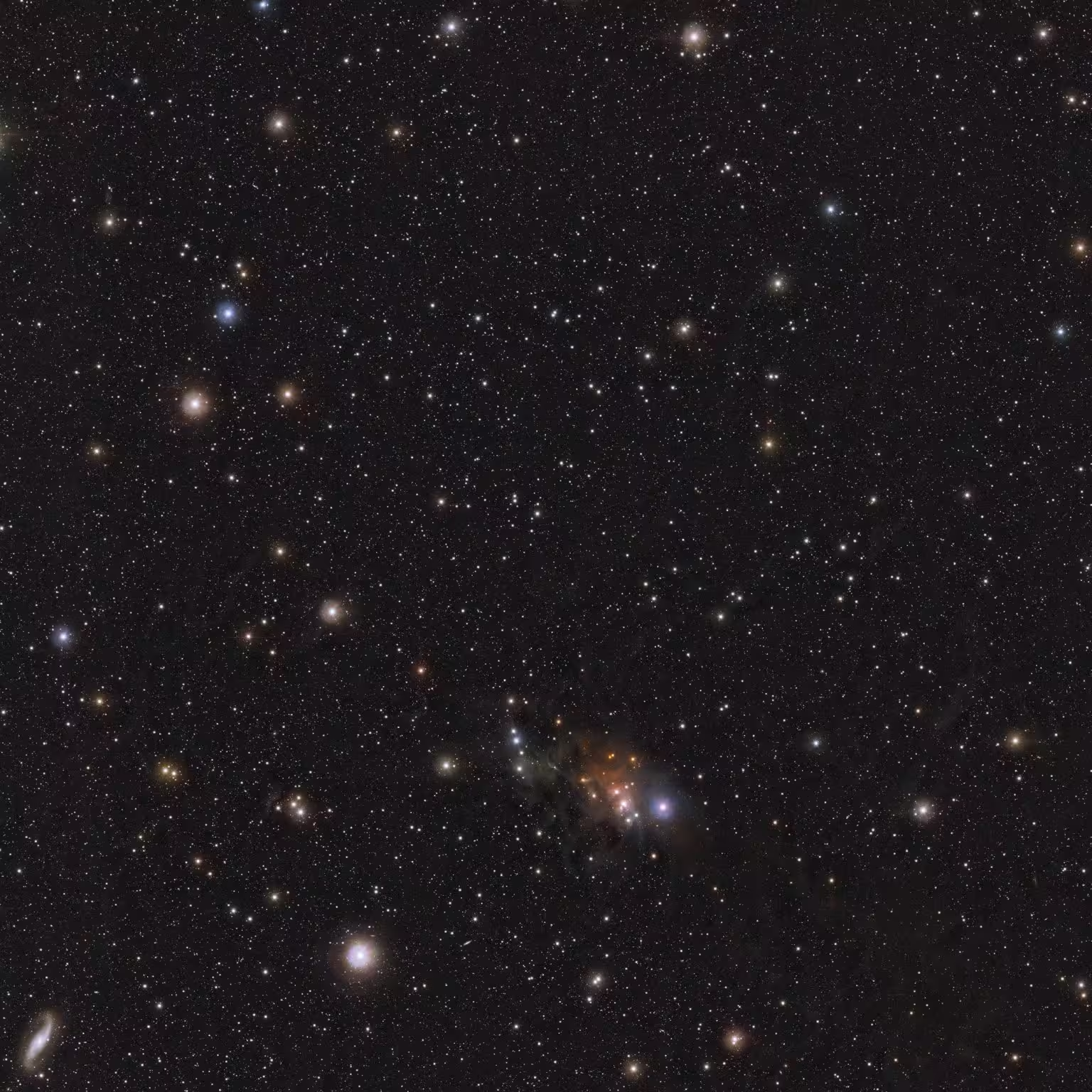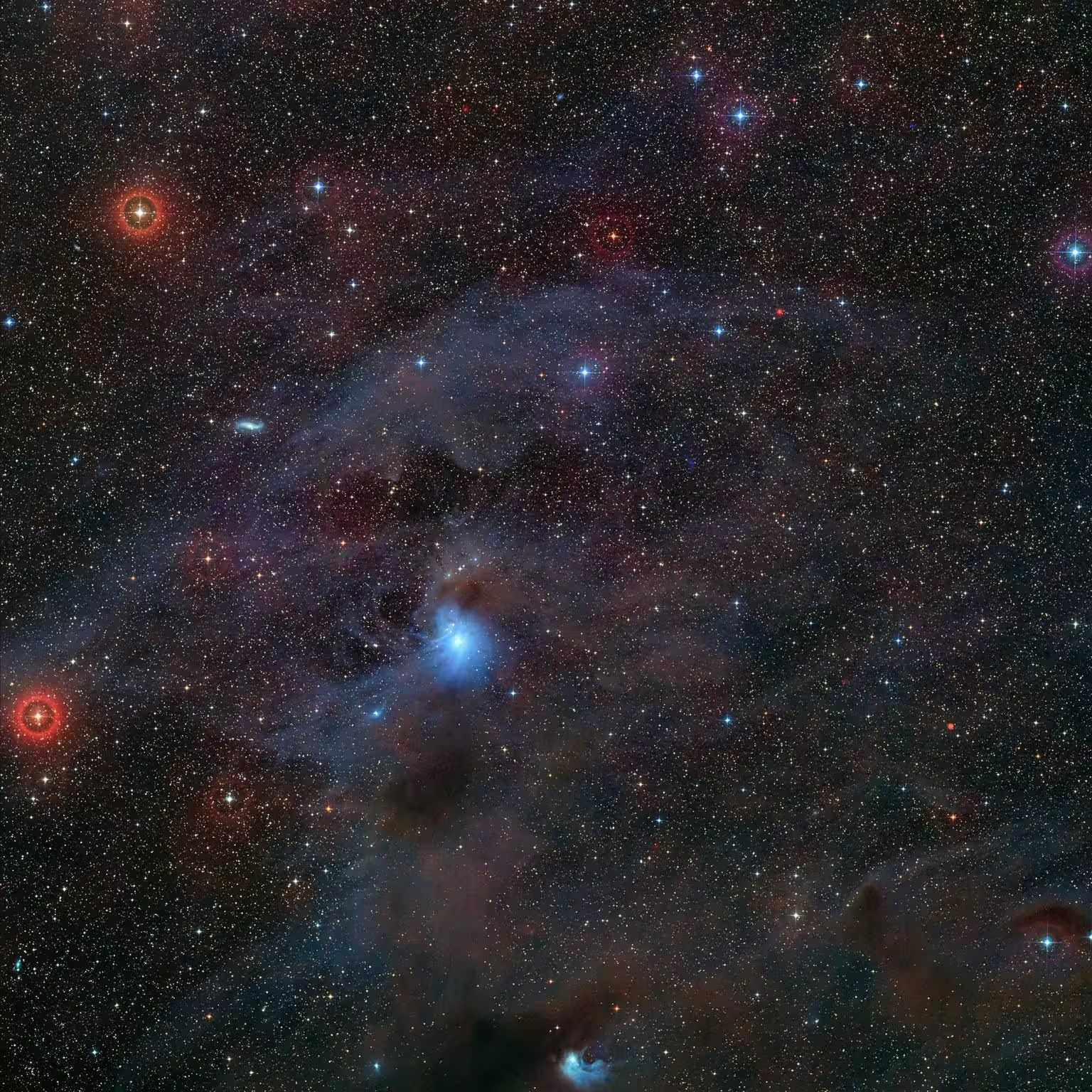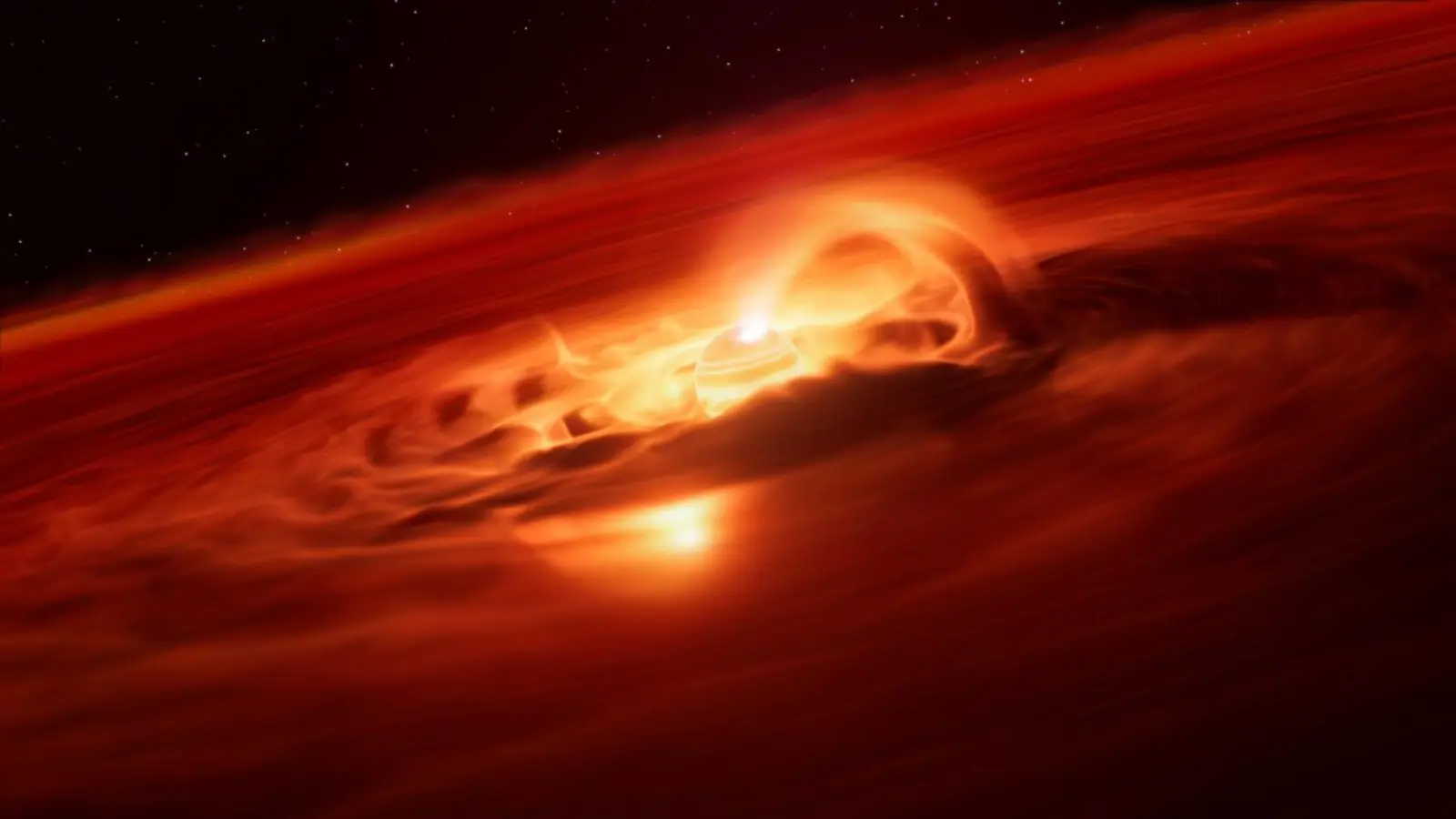6 Minutes
Rogue planet devours disc material at unprecedented rate
A free-floating or "rogue" planet, known as Cha 1107-7626, has been observed in a dramatic growth phase, consuming surrounding gas and dust at a rate roughly six billion tonnes per second. Detected at approximately 620 light-years in the Chamaeleon constellation, this object has a mass estimated between five and ten times that of Jupiter. The measured infall — an accretion episode — represents the fastest planetary accretion ever recorded and provides new evidence that some planetary-mass objects could form through processes traditionally associated with stars.
Observations and instruments: how the discovery was made
The discovery is based on spectroscopic observations from the European Southern Observatory’s Very Large Telescope (ESO VLT) in Chile. The research team used the X-shooter spectrograph to capture the sudden brightening and spectral signatures associated with accretion. They supplemented the VLT data with archival SINFONI observations and mid-infrared contributions from the James Webb Space Telescope (JWST), integrating multiple wavelengths to trace changes in the disc chemistry and the accretion flow.
Spectroscopy reveals the physical conditions of material falling onto the object: line profiles, continuum excess, and molecular features indicate both the rate at which mass is accreted and how the inflow is channelled. Between early 2025 and August 2025, the team recorded a rapid surge in accretion, roughly eight times higher than a few months prior, culminating in the six-billion-tonnes-per-second peak. That instantaneous rate is unprecedented for any planetary-mass object.
What the accretion burst reveals about formation pathways
Accretion outbursts are common in young stellar objects where gravitational collapse and magnetic processes funnel material from a circumstellar disc onto the central protostar. Observing a similar phenomenon around Cha 1107-7626 suggests formation mechanisms that overlap with those of low-mass stars. Aleks Scholz of the University of St Andrews, a co-author on the study, framed the central question succinctly: are rogue planets the lowest-mass end of star formation, or are they planets ejected from stellar systems? The intense, star-like accretion episode strengthens the case that at least some free-floating planetary-mass objects form like stars, through direct collapse of a gas cloud followed by episodic accretion.
By comparing spectra taken before and during the burst, researchers identified changes in the disc chemistry: water vapour lines emerged during the accretion episode but were absent beforehand. Such transient chemistry shifts mirror behaviour seen around young stars, where heating and shocks associated with bursts liberate molecules from dust and drive short-lived chemical signatures. The detection of water vapour during an accretion burst around a planetary-mass object is novel and implies that discs around these bodies can undergo rapid physical and chemical evolution.
Magnetic fields and accretion mechanics
One striking result is the evidence that magnetic fields may be involved in funnelling material onto Cha 1107-7626 — a process well documented in classical T Tauri stars but not previously confirmed around planetary-mass objects. Magnetic funneling produces specific spectroscopic signatures and can drive high-velocity infall along field lines, concentrating material onto a small surface area and producing bright accretion hotspots. If low-mass objects can generate sufficiently strong magnetic fields, they may experience periodic, intense accretion episodes similar to those of young stars.
The presence of magnetically controlled accretion would blur the distinction between planets and stars in their earliest stages, suggesting a continuum of formation and early evolution across a wide mass range. For planetary scientists and star-formation theorists, this finding challenges models that treat planet formation and stellar formation as wholly separate channels.
Implications for population studies and detectability
Free-floating planets are intrinsically faint and thus difficult to find. This detection relied on both the sensitivity of modern spectrographs and the fortuitous timing of an accretion outburst that significantly boosted the object's brightness. Future facilities, notably ESO’s Extremely Large Telescope (ELT) with its 39-metre primary mirror, will dramatically increase the ability to detect and characterise faint, isolated planetary-mass objects. High-resolution spectroscopy and adaptive optics on the ELT will enable direct study of accretion tracers, magnetic indicators, and disc chemistry for a larger sample of rogue planets.

This infrared image, taken with ESO’s Visible and Infrared Telescope for Astronomy (VISTA) shows the position in the sky of the rogue planet Cha 1107-7626. The planet is a dot located exactly at the center of the frame. Credit: ESO/Meingast et al.
Expert Insight
"Finding a planetary-mass object behaving like a young star reshapes how we classify and study substellar objects," says Dr. Maya Patel, astrophysicist at the Institute for Exoplanetary Science. "This event demonstrates that episodic accretion and magnetic processes operate down to very low masses. With next-generation telescopes we'll be able to test whether Cha 1107-7626 is typical among rogue planets or an extreme outlier."
How this discovery advances planet formation theory
The Cha 1107-7626 case provides empirical constraints for theoretical models of low-mass object formation. Models must now account for (1) rapid, bursty accretion episodes at planetary masses; (2) the potential for strong magnetic fields in bodies only a few times Jupiter's mass; and (3) transient disc chemistry, including water vapour production during heating events. Together, these results support a hybrid perspective in which some isolated planetary-mass objects form through scaled-down versions of star formation while others may originate within planetary systems and later be expelled.
Conclusion
Cha 1107-7626 has offered a rare and revealing snapshot of extreme planetary growth. The record accretion rate, the possible role of magnetic funneling, and the temporary emergence of water vapour in the disc all point toward a star-like formation route for at least some rogue planets. Continued multiwavelength monitoring and the arrival of powerful facilities such as the ELT will be key to determining how common these processes are and how they shape the population of free-floating worlds across our galaxy.

This visible-light image, part of the Digitized Sky Survey 2, shows the position in the sky of the rogue planet Cha 1107-7626. The planet (not visible here) is located exactly at the center of the frame. Credit: ESO/ Digitized Sky Survey 2
Source: scitechdaily


Leave a Comment